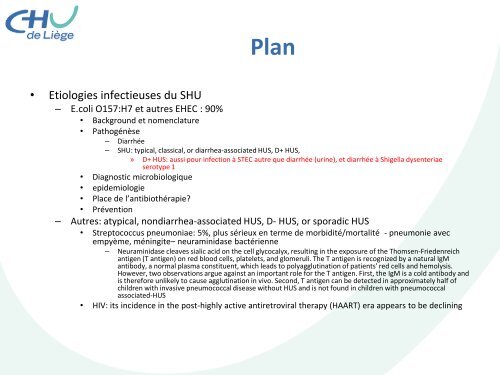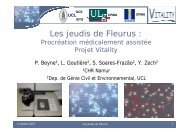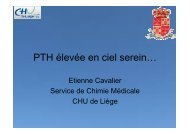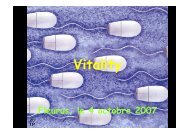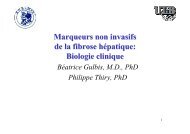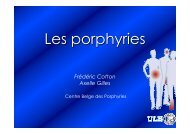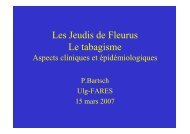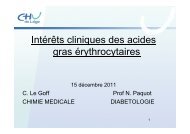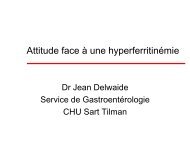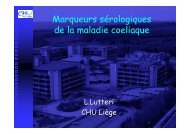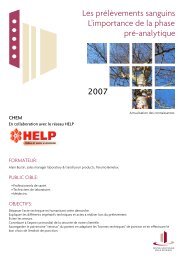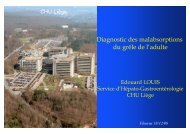Ph-Biol J Descy - Les Jeudis de Fleurus
Ph-Biol J Descy - Les Jeudis de Fleurus
Ph-Biol J Descy - Les Jeudis de Fleurus
- No tags were found...
Create successful ePaper yourself
Turn your PDF publications into a flip-book with our unique Google optimized e-Paper software.
Plan• Etiologies infectieuses du SHU– E.coli O157:H7 et autres EHEC : 90%• Background et nomenclature• Pathogénèse– Diarrhée– SHU: typical, classical, or diarrhea-associated HUS, D+ HUS,» D+ HUS: aussi pour infection à STEC autre que diarrhée (urine), et diarrhée à Shigella dysenteriaeserotype 1• Diagnostic microbiologique• epi<strong>de</strong>miologie• Place <strong>de</strong> l’antibiothérapie?• Prévention– Autres: atypical, nondiarrhea-associated HUS, D- HUS, or sporadic HUS• Streptococcus pneumoniae: 5%, plus sérieux en terme <strong>de</strong> morbidité/mortalité - pneumonie avecempyème, méningite– neuraminidase bactérienne– Neuraminidase cleaves sialic acid on the cell glycocalyx, resulting in the exposure of the Thomsen-Frie<strong>de</strong>nreichantigen (T antigen) on red blood cells, platelets, and glomeruli. The T antigen is recognized by a natural IgMantibody, a normal plasma constituent, which leads to polyagglutination of patients' red cells and hemolysis.However, two observations argue against an important role for the T antigen. First, the IgM is a cold antibody andis therefore unlikely to cause agglutination in vivo. Second, T antigen can be <strong>de</strong>tected in approximately half ofchildren with invasive pneumococcal disease without HUS and is not found in children with pneumococcalassociated-HUS• HIV: its inci<strong>de</strong>nce in the post-highly active antiretroviral therapy (HAART) era appears to be <strong>de</strong>clining


